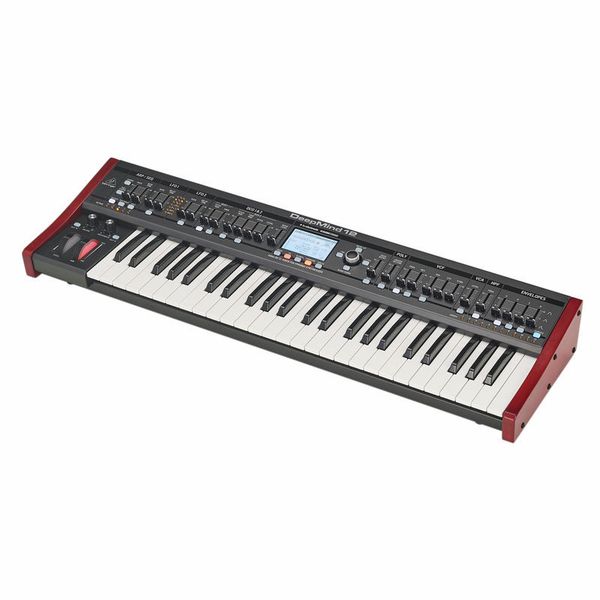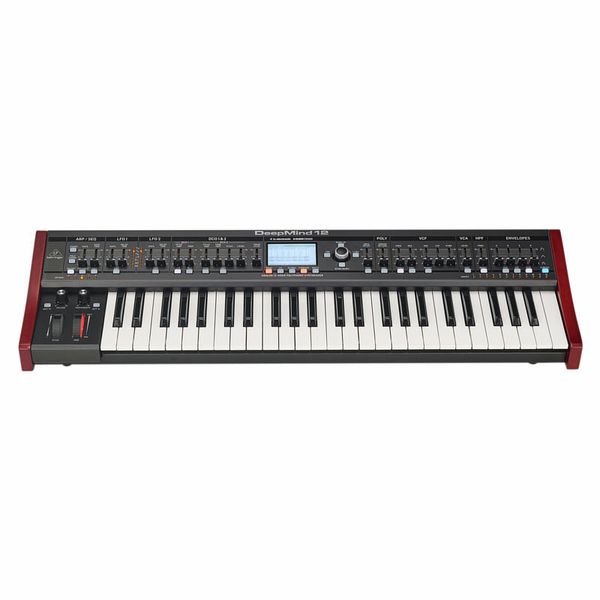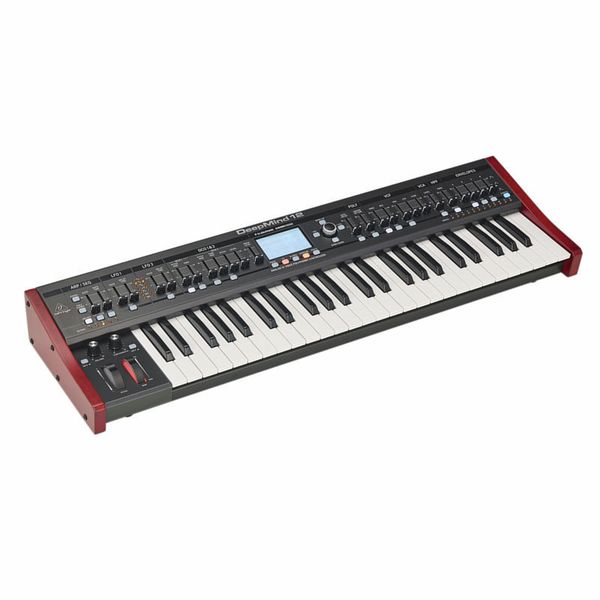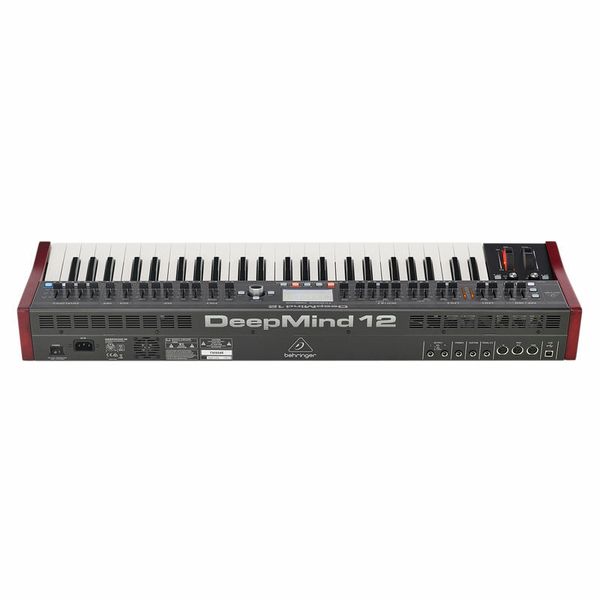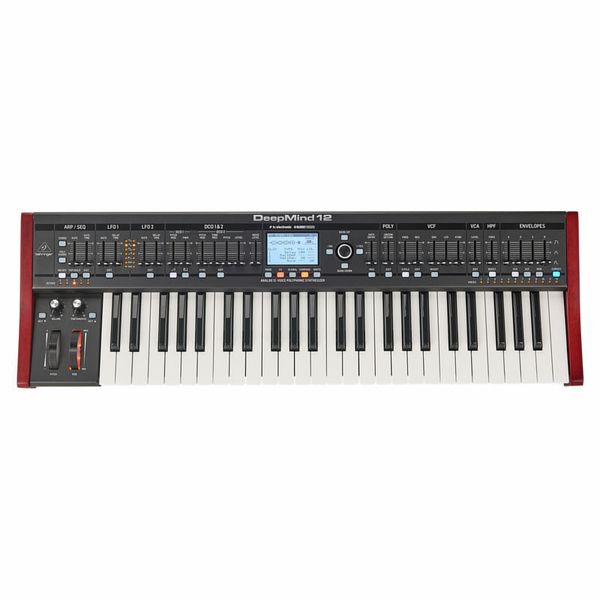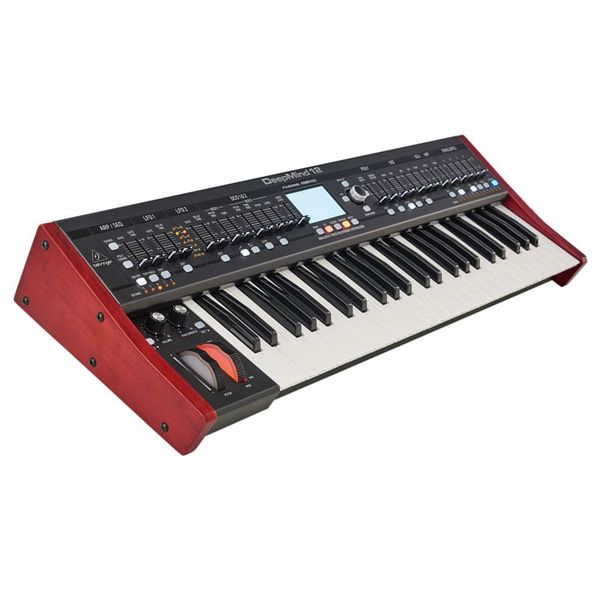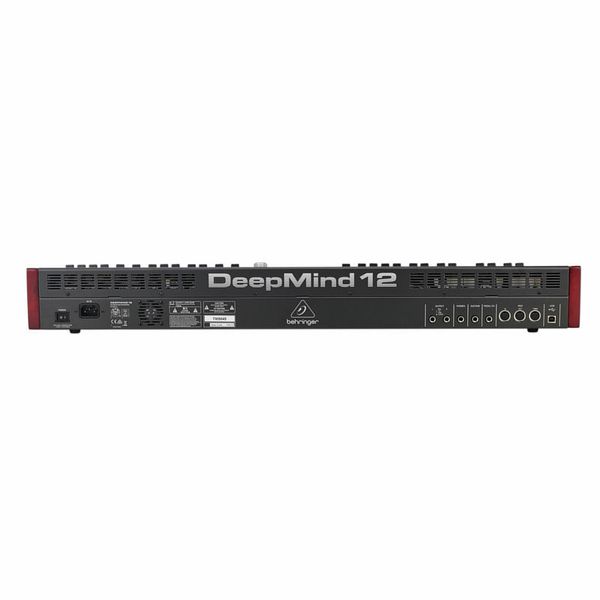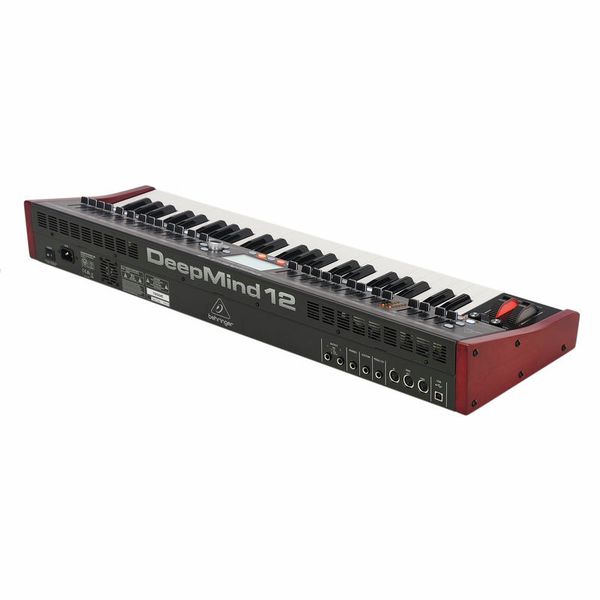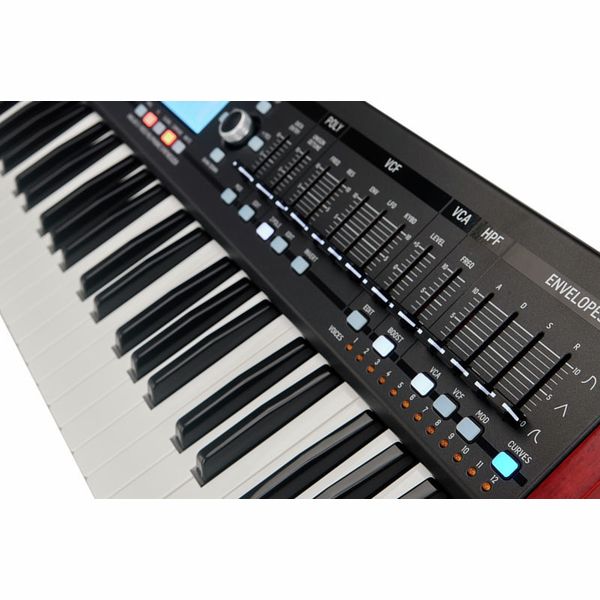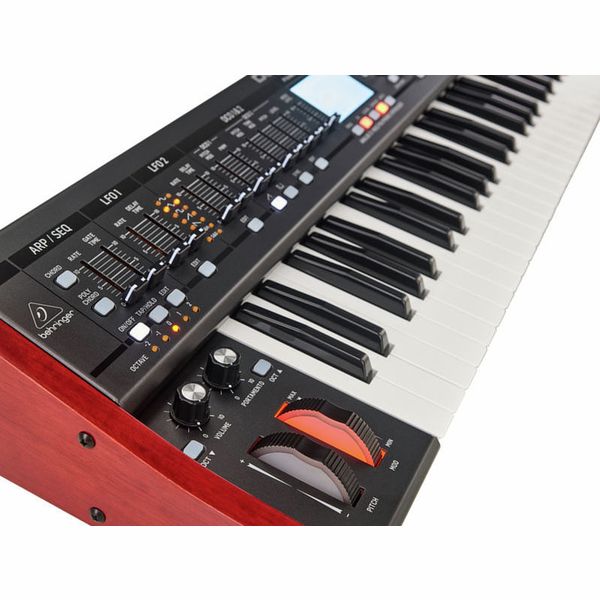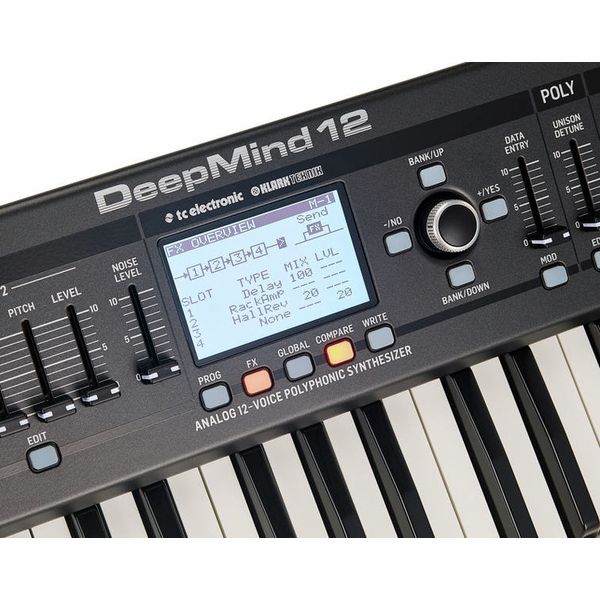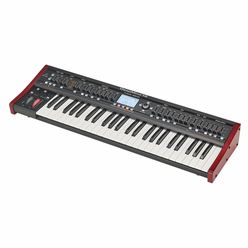12-Voice Analogue Synthesizer
- 49 Half-weighted full-size keys
- Velocity sensitive keys with aftertouch
- 4 FX engines powered by tc electronic and Klark Teknik
- 24 oscillators - 2 OSCs and LFOs per voice
- 3 ADSR generators
- Switchable 2- or 4-pole low-pass filter per voice
- High-pass filter
- 8-Channel modulation matrix
- 32-Step control sequencer
- Envelope Depth
- Key tracking
- Remote controllable via iPad/PC/Mac, USB, MIDI or built-in Wi-Fi
- 26 Knobs and one switch per function for direct access to all important parameters in real time
- 1024 Programme memories
- Built-in and adjustable Wi-Fi client
- LC display
- Dimensions (W x D x H): 822 x 257 x 103 mm
- Weight: 8.4 kg
- Designed and engineered in the U.K.
- Suitable optional bag: Art.479789 (not included in delivery)
- suitable optional case: Art.416352 (not included in delivery)
K dostání od
Prosinec 2016
Číslo produktu
402983
Prodejní jednotka
1 ks
Number Of Keys
49
Touch-Sensitive
Yes
Aftertouch
Yes
Split Zones
No
Modulation Wheel
Yes
Number of simultaneous Voices
12
Sound Engine
Analogue
MIDI interface
1x In, 1x Out, 1x Thru
Storage Medium
Internal
USB-port
Yes
Effects
Multieffect processor
Arpeggiator
Yes
Number of Analog Outputs
2
Digital Output
No
Display
Yes
Pedal Connections
1x Pedal, 1x Sustain
Dimensions
822 x 257 x 103 mm
Weight
8,4 kg
Zobrazit víc
Setové nabídky





